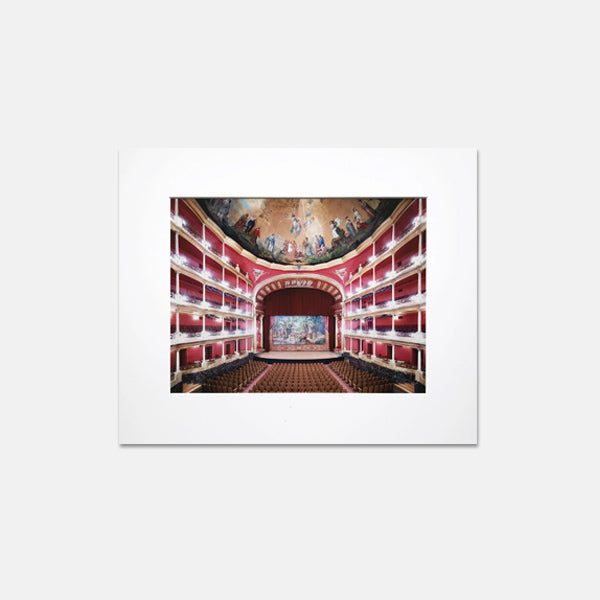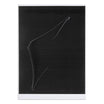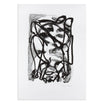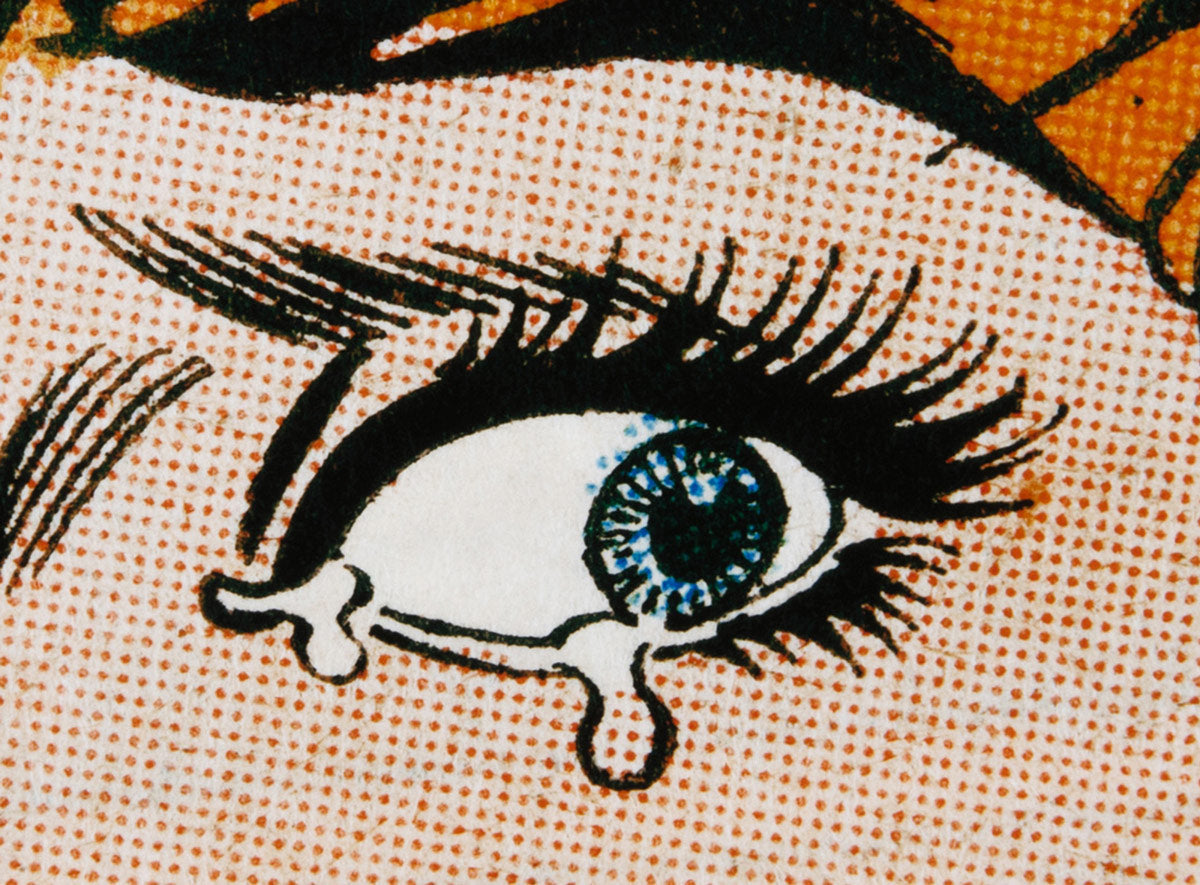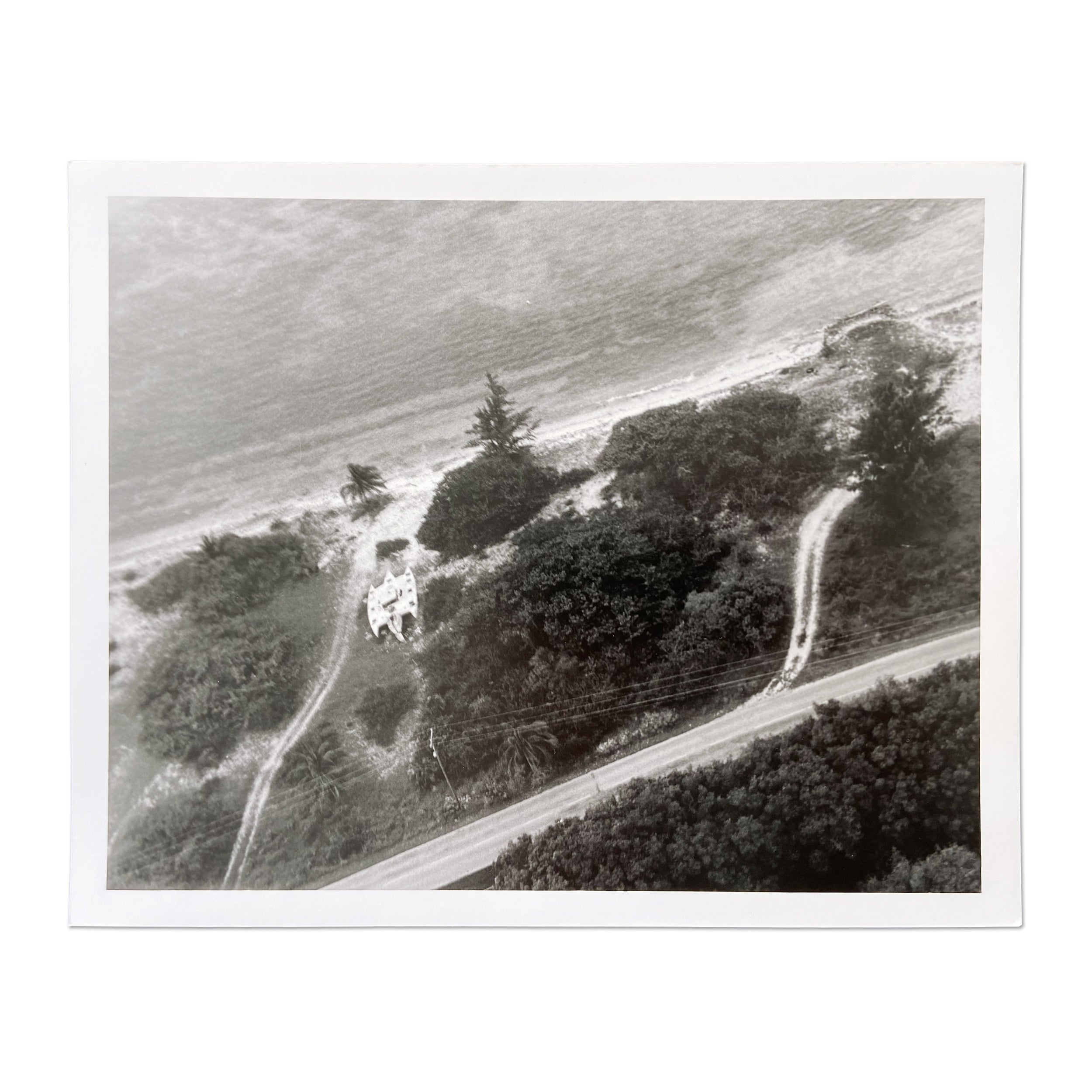
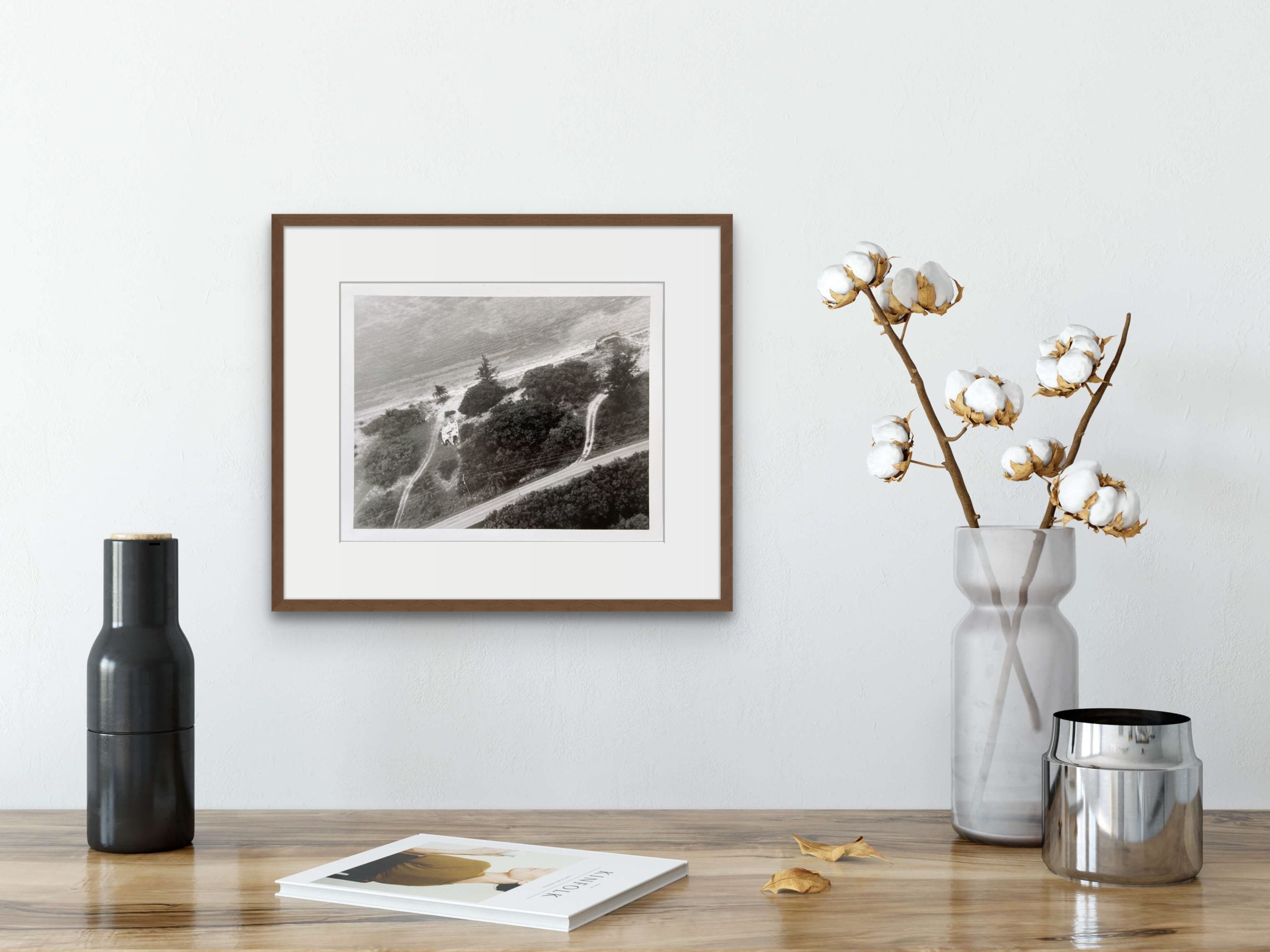
Tacita Dean - Aerial View of Teignmouth Electron
Taxes included. Shipping calculated at checkout.
Tacita Dean (British, born 1965)
Aerial View of Teignmouth Electron, Cayman Brac 16th of September 1998, 2000
Medium: Gelatin silver print on paper
Dimensions: 21 x 26 cm (8 1/4 x 10 1/4 in)
Edition of 100: Hand signed, numbered and dated
Condition: Mint (sold unframed)
Artwork details
Aerial View of Teignmouth Electron, Cayman Brac 16th of September 1998 features the decaying husk of a beached trimaran which was abandoned many years before by its owner and which has succumbed to the elements and rotted over time. The black and white photograph was taken from an aeroplane flying over the south side of the Caribbean island, Cayman Brac, where the Teignmouth Electron is slowly disintegrating. The vertiginous aerial view reconfigures the landscape. A long sliver of pale sand forms a dividing line between land and sea like a misplaced horizon, the foam of crashing waves mimicking clouds. The derelict trimaran appears small and vulnerable, as if cowed by the vast expanse of sea whose magnitude and power is emphasized by the bird’s eye view.
This photograph is one of a number of works by Dean inspired by the tragic story of Donald Crowhurst’s doomed attempt to circumnavigate the world in his boat, Teignmouth Electron, named after the town in Devon that funded its construction and from where he set sail. In 1968, Crowhurst entered The Sunday Times Golden Globe competition to be the first to sail solo and non-stop around the world. Having embarked on his journey in an untested and ill-prepared trimaran, with no sailing experience, Crowhurst radioed in his coordinates which suggested that he was in the lead. After some time, however, all radio contact ceased. Eight months after the race began, Crowhurst’s boat was found abandoned a few hundred miles off the coast of England. Subsequent investigation revealed that Crowhurst had never left the Atlantic and had, in fact, falsified his coordinates.
– Helen Delaney, Tate Britain, February 2002
About this artist
Tacita Dean, an esteemed British artist, is celebrated for her conceptual artworks, including films, photographs, and drawings. Her art delves into themes of chance, memory, and the passage of time, frequently incorporating nautical imagery and capturing the poetic decay of derelict spaces.
Dean’s artwork is particularly noted for its meticulous attention to the human traces left in nature, recording how these marks withstand or change over time. In her filmmaking, Dean exhibits a profound reverence for the process and texture of analogue film, embracing the medium’s inherent unpredictability. She often utilizes long takes and static shots that allow the viewer to engage deeply with the visual narrative and its subtle developments.
Through her art, Dean both celebrates the unique beauty of 16mm film and expresses a sense of loss over its gradual disappearance in the digital age. She has remarked, “Digital is so known, and film is all about the unknown,” underscoring her preference for the mysterious and evocative qualities that film imparts to her work.
Dean’s artworks stand out for their ability to blend technical mastery with a philosophical inquiry into the ways we perceive and memorialize the world around us. This approach not only highlights the technical aspects of film but also enriches the viewer’s understanding of her thematic focus on temporality and memory.

You may also like

Buy art online
Shop art editions online with transparent pricing, accurate condition reports, and fast dispatch. Designed for international collectors, we make buying limited edition prints and artworks simple, secure, and reliable.
Worldwide shipping
We ship art editions worldwide with full insurance and tracking. Handled only by trusted international carriers, each shipment is securely packaged and typically dispatched within 5 days.
Professional packaging
Every artwork is packaged to the highest professional standards. Using solid multi-layer cardboard and protective materials, we ensure your art editions arrive safely and in excellent condition.
Secure payment
Buy with confidence using secure, encrypted payments backed by advanced fraud protection. Every transaction is processed with trusted technology, ensuring a smooth and worry-free checkout for collectors worldwide.

